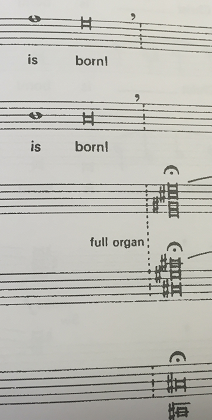
 ID THE CELEBRATION of the birth of Jesus Christ rock your world this year? Did it cause a seismic shift in your life? Did it change everything? If not, then perhaps listening to one C# minor chord will do the trick.
ID THE CELEBRATION of the birth of Jesus Christ rock your world this year? Did it cause a seismic shift in your life? Did it change everything? If not, then perhaps listening to one C# minor chord will do the trick.
In Sir John Tavener’s (1944-2013) God Is With Us for eight-part choir and organ, we are immersed in the key of C major (with some Lydian F# passing tones). For more than three-fourths of the piece, both choir and tenor soloist cry out the prophecy, “God is with us…Hear ye people…the people that walked in darkness have seen a great light…for unto us a child is born…” and so on. Byzantine microtonal ‘breaks’ in the voice and an occasional A-flat cannot unhinge us from the purely diatonic nature of C major. So long are we kept here, and so forceful is the a cappella singing, that we are lulled into a sense of normalcy.
But what does this C major mean? Perhaps it has a theological or even historical meaning. I believe that the stability of C major is directly related to the important line of the Christmas Proclamation, “the whole world being at peace.” Just at the time of Jesus’ birth, all seemed well, solid, and stable. What could be more stable than C major?
This must be all there is, we think. Perhaps this is just an announcement of the birth of another prophet. And besides, how can this thing happen, “God is with us?” How? The choir proclaims the answer – “Christ is born!”
And now everything is changed.
For after the choir sings “Christ is born,” suddenly and out of nowhere, the full organ enters on a an astonishing C# minor chord! It’s as if the whole world has suddenly shifted off of its axis. Everything we thought was normal is gone. Everything we’ve gotten used to is changed. Tavener has completely and totally explained the impact and import of the birth of Jesus Christ with one chord! With this birth nothing can and will be the same ever again.
Every time I listen to this piece, even though I know what’s coming, I’m still shocked. The theology of this cataclysmic event is all contained in one single chord. Listen to this great piece as the Christmas season comes to a close and see if you agree.

